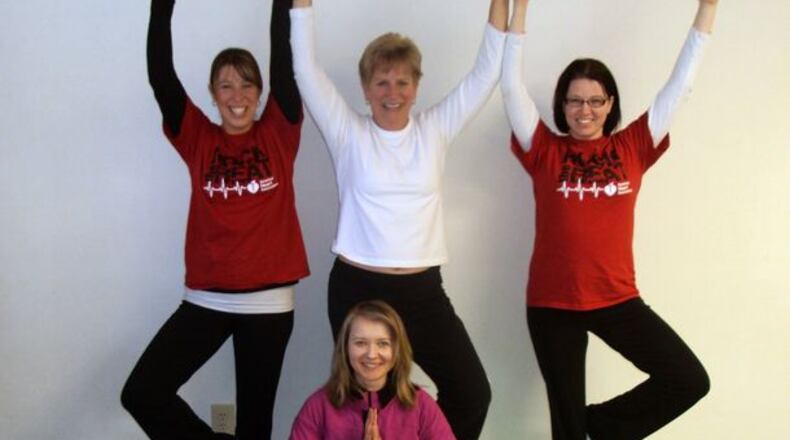Q: How might practicing yoga and meditation help people who have been cooped up inside all winter without regular exercise?
A: “Yoga offers a good way to get things moving again, as yoga postures increase energy and vitality, energize stagnant areas and add back flexibility and balance. Breathing practices will improve blood circulation and increase metabolism. Meditation is a practice of mindfulness inviting mind to be quiet and still.”
Q: How can the practice of yoga help people of all ages, fitness levels?
A: “Yoga is a mind-body practice that combines stretching exercises, breathing techniques and relaxation. Yoga poses help balance the body, providing strength and flexibility more evenly between left and right, top and bottom, front and back. Yoga poses assist in developing strength in weaker parts of the body and releasing tension in tighter areas.”
Q: How long have you been teaching yoga? How did you learn and what sparked your interest?
A: “I have been teaching yoga for about seven months and started practicing yoga about seven years ago. I was stressed and had lower back discomfort and a friend suggested I try yoga. When I started yoga at a gym, it was a physical practice for me for a long time. I used to always skip the last relaxation pose called “Savasana,” in which you are supposed to stay still for 5-10 minutes, because I felt I was much too busy to take the time for that. Years later, I discovered the other side of yoga incorporating the whole approach of mind, body, and breath. Yoga is just like life: It is a journey of self-discovery and self-awareness.”
Q: How does yoga reduce stress, especially in people who are very busy all the time and running in a lot of different directions?
A: “On a physical level, yoga helps reduce stress by relieving tension in the most common areas of our body: shoulders, neck, and lower back. Our body feels more relaxed when there is no tension. It also creates a postural awareness for everyday activities.
On a physiological level, yoga helps reduce stress by building awareness of the breath. Our breath is a reflection of our emotional state. When we are stressed, our breath becomes shallow, coarse, irregular, and we often hold the breath. In yoga we practice taking deep, long and steady breaths, which helps calm the nervous system. Someone once said: “When you own your breath, nobody can steal your peace.”
On an emotional level, yoga incorporates the practice of mindfulness, being attuned with the bodily sensations and the mind surrendering in the present moment.”
Q: Are there different types of yoga?
A: “Yes, there are many types of yoga. Hatha yoga is the most commonly recognized and great for beginners. Hatha is often translated as “Ha” meaning “sun” and “Tha” meaning “moon,” which refers to the balance of the masculine energy of the hot sun and the feminine energy of the cool moon.”
For more information about classes Lamm offers, email at jlamm5909@aol.com or call (937) 286-2624.
About the Author
